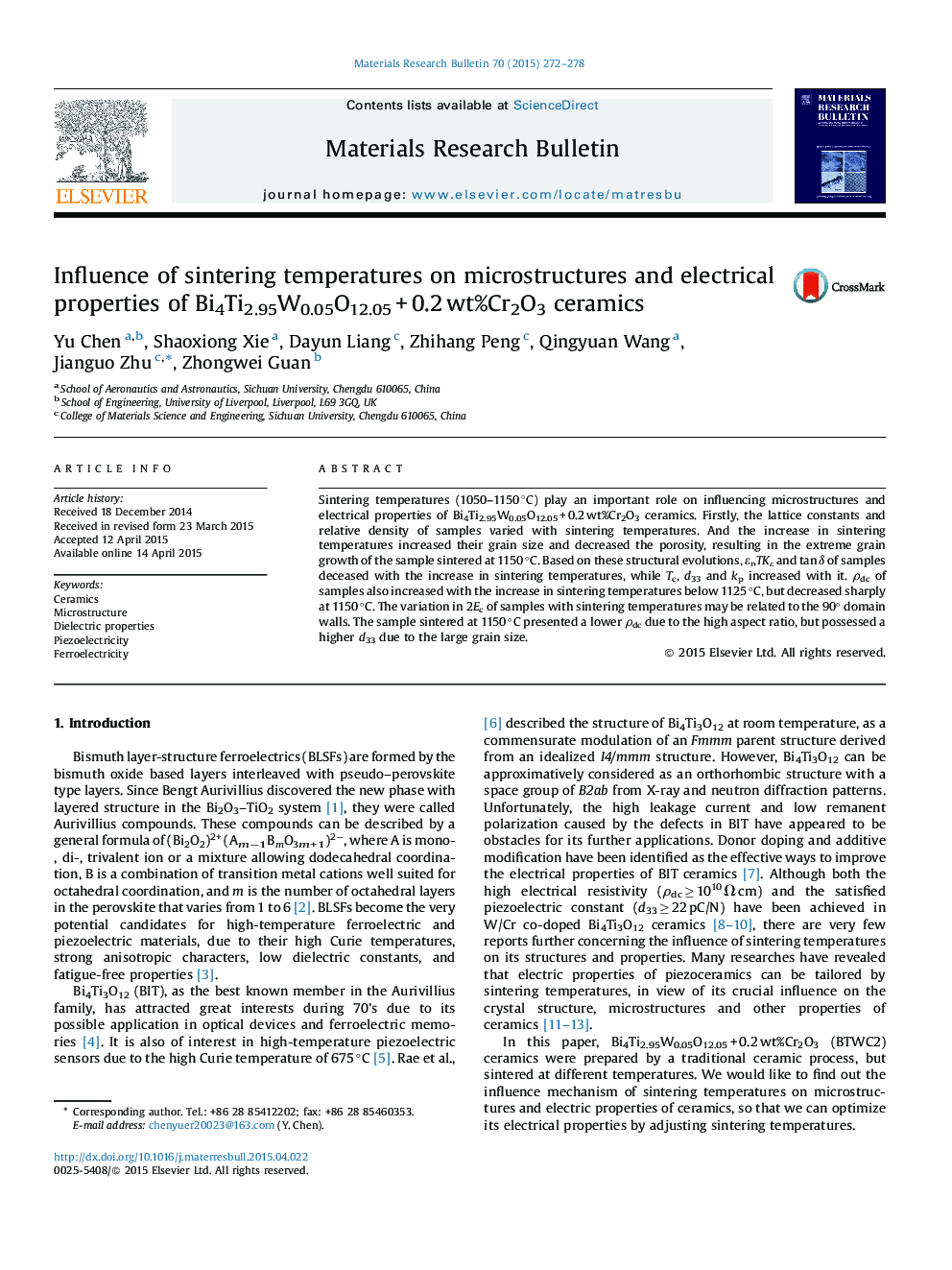| Article ID | Journal | Published Year | Pages | File Type |
|---|---|---|---|---|
| 1487290 | Materials Research Bulletin | 2015 | 7 Pages |
•The shift tendency of (1 1 7) peak indicated the variation in the lattice constant c.•An extreme grain growth occurred in the BTWC2 ceramic sintered at 1150 °C.•The ceramic sintered at 1150 °C obtained a high d33 28 pC/N due to its larger grains.
Sintering temperatures (1050–1150 °C) play an important role on influencing microstructures and electrical properties of Bi4Ti2.95W0.05O12.05 + 0.2 wt%Cr2O3 ceramics. Firstly, the lattice constants and relative density of samples varied with sintering temperatures. And the increase in sintering temperatures increased their grain size and decreased the porosity, resulting in the extreme grain growth of the sample sintered at 1150 °C. Based on these structural evolutions, ϵr, TKϵ and tan δ of samples deceased with the increase in sintering temperatures, while Tc, d33 and kp increased with it. ρdc of samples also increased with the increase in sintering temperatures below 1125 °C, but decreased sharply at 1150 °C. The variation in 2Ec of samples with sintering temperatures may be related to the 90° domain walls. The sample sintered at 1150 °C presented a lower ρdc due to the high aspect ratio, but possessed a higher d33 due to the large grain size.
Graphical abstractXRD patterns of BTWC2 ceramics sintered at different temperatures.Figure optionsDownload full-size imageDownload as PowerPoint slide
